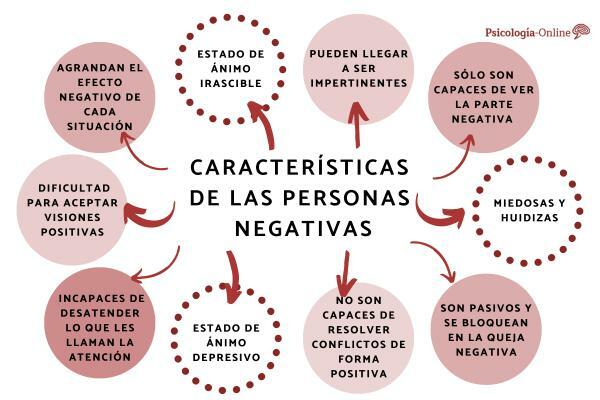
Some people say that we live in the age of “posturing” and “Mr. Wonderful. Many times we notice about us the immense need to find what makes us happy and fills us with pleasure. In the age of social networks, this is aggravated, offering us the wonderful opportunity to share with anyone what we are doing at every precise moment.
Now more than ever, the overwhelming need to share happy moments with others seems to invade us, but what if I don't want to look for activities that make me happy because I don't want to be happy? What if I prefer to avoid pleasure? Keep reading this Psychology-Online article, in which we will explain what people who run away from happiness are called, what symptoms they suffer from, what could be its cause and its treatment. Known symptoms, causes and treatment of cherophobia.
Index
- What is cherophobia
- Symptoms of cherophobia
- Causes of cherophobia
- Treatment of cherophobia
What is cherophobia?
What is it called to be afraid of happiness? It is known as cherophobia, whose meaning is the fear of being happy. Specifically, cherophobia, also called chaerophobia, is the
Some articles discuss the concept of fear of happiness in terms of beliefs personal, that is, there are certain people who think that the relationship with happiness should be abolished This concept, which for some might seem surreal, is universally extended in various cultures.
Symptoms of cherophobia.
People who say they are afraid of happiness have the following symptoms:
- High negative valence in relation to happiness.
- excessive avoidance and escape of these stimuli that can cause a feeling of well-being.
- Wrong estimates of threat, that is, the meanings attributed to the stimulus of happiness and the evoked response of fear.
- appearance of others disorders derived from this phobia.
- Loss of interest and avoidance of those satisfying activities.
- No seeking new sensations.

Causes of cherophobia.
There is no single cause that determines the appearance of cherophobia or cherophobia. Even so, everything points to a causal relationship of a psychosocial type, since some cultures say that pursuit of extreme happiness should be avoided because it is very likely to lead to unhappiness. From the previous reflection, let's see what are the main causes of cherophobia:
- beliefs: there are people who say they fear happiness because it brings you bad things, such as unhappiness, suffering, and death, necessary conditions for some to manifest this tendency of cherophobia or kerophobia.
- Religion: Others say that being happy makes you a worse person, since some religions seem to make explicit criticism of laughter, and They even go so far as to talk about happiness distracting you from God, making those people happy morally and spiritually. lower.
- envy of others: another of the causes of cherophobia mentioned by Joshanloo, M., & Weijers, D. (2013)[1] in his article he refers to the expression of happiness, alluding to the fact that it causes discomfort and envy in others, which is why it should be avoided. They affirm the pursuit of happiness is also bad for the individual himself, reasoning that this search makes us more selfish, which will make it difficult for the person to relate to his peers. In this article you will see what is envy and its consequences.
- conditioning: Cherophobia is consolidated by poor learning, where the individual suffers from intense anxiety immediately in the face of stimuli that cause happiness.
Treatment of cherophobia.
How to overcome cherophobia? As in all phobias, the key to the extinction of fear is always the repeated exposure to the feared stimulus specifically, as could the feeling of well-being, happiness or pleasurable activities. The objective is to generate a new learning in which the feared stimulus becomes innocuous. What to do to not be afraid to be happy? We'll tell you then.
Learn skills to control anxiety
It is important to start treatment by acquiring anxiety control and relaxation skills, as well as creating a safe environment within the framework of an appropriate therapeutic alliance to be able to continue advancing. In this article you will find 9 relaxation techniques to make it.
Systematic desensitization therapy
What to do to not be afraid to be happy? Apply systematic desensitization therapy that works by counterconditioning, that is, by associate or generate an opposite response (relaxation) to the one that would be generated initially (fear, anxiety…) for happiness.
A hierarchy is necessary to be able to carry out this technique. In this article, we tell you in more detail what the systematic desensitization technique.
exposure therapy
The most current and used exposure therapy is based on Maurer's bifactorial theory and the habituation/extinction models. The effectiveness of this treatment for cherophobia lies in prevent avoidance from becoming a safety signal. This therapy can be carried out in several ways:
- Live (gradual or inversive): exposing oneself directly to the situation that generates the irrational fear with happiness
- symbolic: through associated visual or auditory stimuli or through virtual reality.
- In a group: thus increasing social support and motivation and adherence to therapy.
- interoceptive: provoking the bodily sensations typical of the moment the fear appears, such as hyperventilation.
Finally, other techniques are also known that work with some phobias such as narrative therapy and the eye movement processing and desensitization (EMDR).
All these therapies mentioned are included in the current of cognitive behavioral therapy of psychology, for which we have more scientific evidence of its effectiveness. As always, the choice of the most appropriate treatment will depend on many personal, social and environmental factors that will make one type or another work better.
Regardless of the type of treatment chosen, the key to success in overcoming cherophobia is that the therapist is aware of the conceptual model applied, a good relationship has been established therapy, a consistent logic of treatment is conveyed and the different exposure modalities are effectively implemented.

This article is merely informative, in Psychology-Online we do not have the power to make a diagnosis or recommend a treatment. We invite you to go to a psychologist to treat your particular case.
If you want to read more articles similar to Cherophobia (fear of being happy): symptoms, causes and treatment, we recommend that you enter our category of Clinical psychology.
References
- Joshanloo, M., & Weijers, D. (2013). Fear of happiness across cultures: A review of where and why are people afraid of happiness. Victoria University of Wellington: Kelburn, Wellington.
Bibliography
- Echeburúa, E., de Corral, P., and Ortiz, C. (2008). Systematic desensitization. A F. J. Labrador, Behavior Modification Techniques (Chap. 10, p. 261-286). Madrid. Pyramid.
- Labrador, f. J: and Crespo, M. (2008). Systematic desensitization. A F. J. Labrador, Behavior Modification Techniques (Chap. 9, p. 243-260). Madrid. Pyramid.


